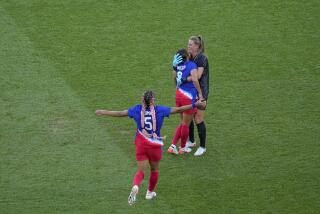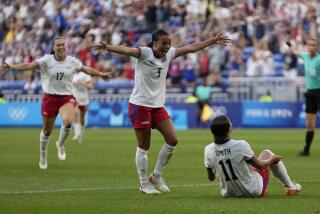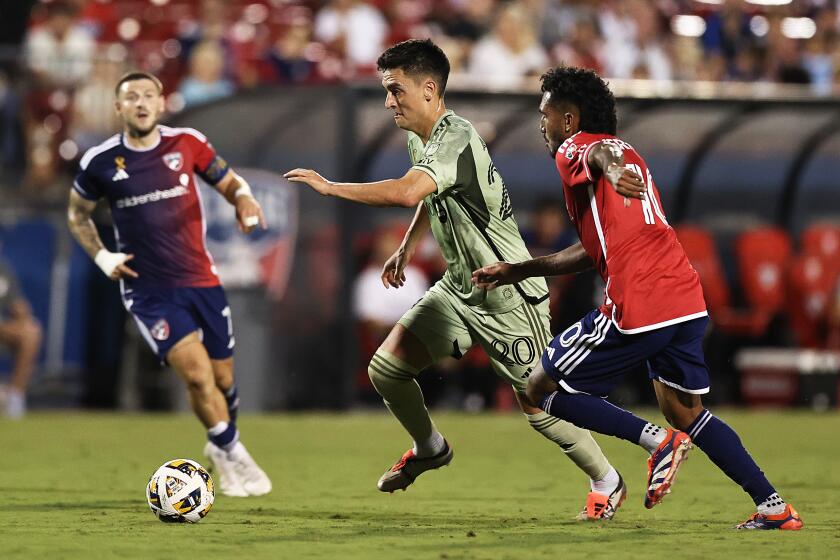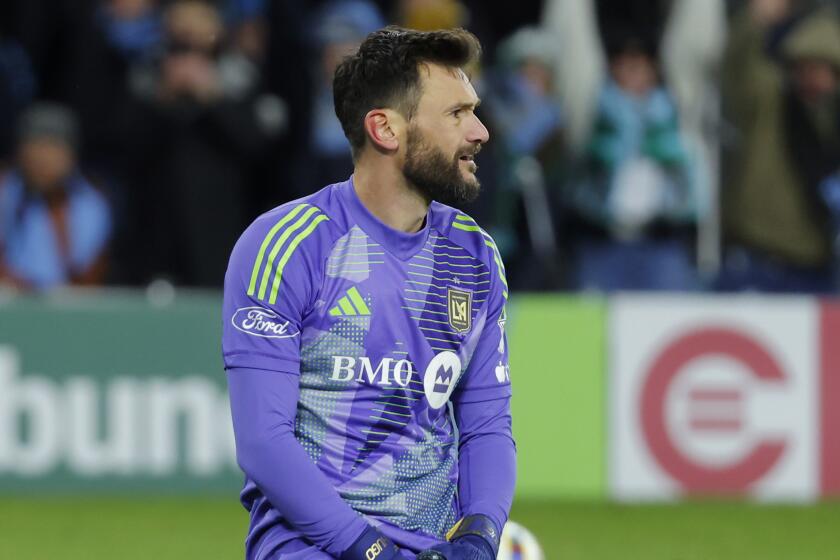Analysis: U.S. put forth little effort against Germany but can see big picture
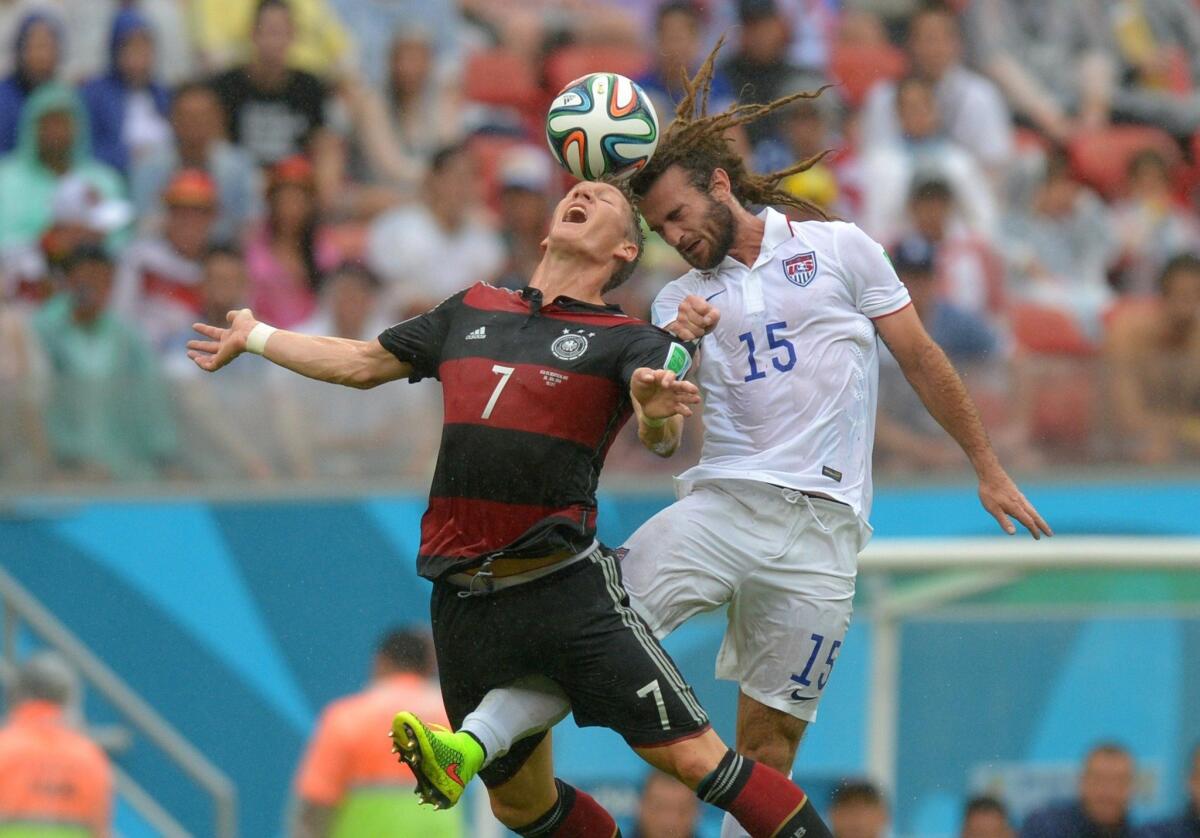
They were dominated, then they celebrated.
Such are the vagaries of the World Cup points format that applied Thursday to the U.S. soccer team. An emphatic 1-0 defeat to Germany was followed by high-fives and hugs among the U.S. players, gleeful over their ascendancy into the round of 16.
The U.S. found some strategical middle ground between going all-out for a win that was not required to advance to the next round, and circling the wagons around their net in an effort to secure a scoreless tie. Any notion to constantly push forward — if it ever were entertained — probably was abandoned when the field turned up slick from relentless rain. Their few excursions were unfulfilling, typically without even a shot being unleased at the German goal.
In the entire game the U.S. managed only four shots, with one on goal. Just two corner kicks speak to the lack of an attack. The U.S. offense was muted from start until nearly finish. In second-half stoppage time U.S. midfielder Alejandro Bedoya’s blocked shot from inside the box, and Clint Dempsey’s subsequent oh-so-close header represent about all the Americans could muster.
At the other end, all Germany had to show for a two-to-one advantage in ball possession and 13 shots was a single goal. The U.S. defended efficiently, denying the Germans good looks, and the winners had to call on their specialty — the set piece — to escape a shutout.
The towering German defender, 6-foot-6 Per Mertesacker, left his post and joined the mix of potential receivers in the box for a corner kick. Exploiting his basketball height, Mertesacker adroitly headed the ball at Tim Howard. The U.S. goalkeeper blocked it, but the rebound headed right to Thomas Mueller, whose thunderbolt in the 55th minute was the only score.
Granting one goal — coming out of a dead-ball situation, at that — earned the U.S. a blue ribbon for its defense.
The turf conditions, the persistent rain and the Group G standings made a win unnecessary for Germany to move on. Those factors lightened the Americans’ burden somewhat, but Germany badly wanted to get on the board, as signaled by the insertion of stone-cold scorer Miroslav Klose for the second half.
Considering Germany’s galaxy of capable scorers and its unconventional offensive scheme that eschews the standard forward position, any opponent would be delighted to hold them to a goal and take its chances.
There was a small but meaningful consolation prize for not winning the group. The U.S. attack might have been partly stunted by lingering weariness from their exhausting draw Sunday with Portugal, so an extra day before their next match will be welcomed. As the group runners-up, the Americans next play Tuesday, against Belgium. Germany copes with a quicker turnaround, playing Monday against Algeria.
If it were momentum that fans of Team USA wanted entering the knockout phase, they didn’t get it. But given the extenuating circumstances of the game with Germany, especially the peculiarities of group play at the World Cup, Americans should take a few steps back and examine the entire body of their team’s work over the course of this Cup.
They would like the wide-angle view — because 16 other teams are going home.
